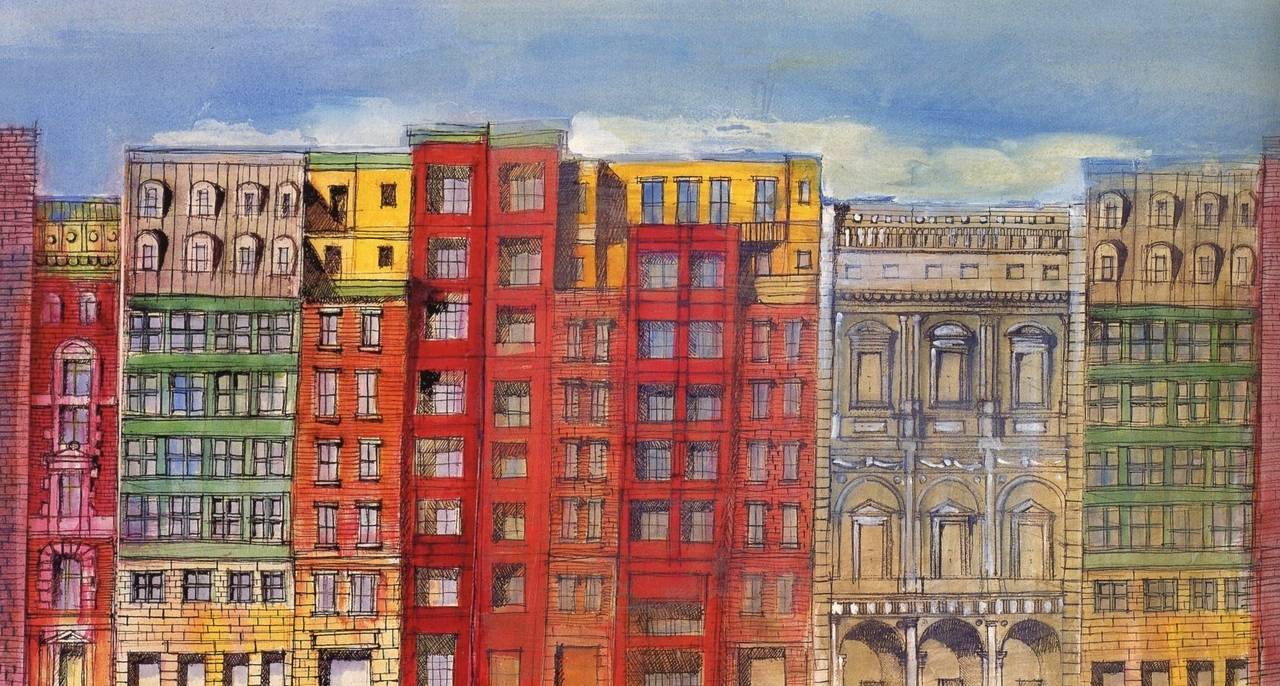The Poetry of Space: the Milanese Master Architect Aldo Rossi
Rendering due tribute to this poet of spaces, we dedicate a few lines to his eternal memory.
Man’s creations have been in many cases pure crystallisations of his own gestures: a glass to drink water was the mimetic response to the curvature that a hand can take when drinking from it. It was thus that human beings plagued the planet with reflections surrounding their own body and nature. When the time came for him to solve the problem of inhabiting the world, he set a limit between his territory and that of all other living creatures –– by raising his dwellings he referenced the body as a home, as well as the cavernous structures of Mother Nature. Poetics of the vague memories of those experiences are hidden deeply in our interior and some men are able to access them naturally, as is the case of the architect Aldo Rossi (1931-1997).

This fabulous philosopher of space created important buildings in different parts of the world, inspired by Italian Modernism and, using his critical and fearless character, he manifested the understanding he had of cities, of their internal dynamics and their need to favour the flow and harmony within them. Some of his most characteristic buildings are: il Teatro del Mundo, designed for the 1979 Venice Biennale, the National Opera of Genoa and the Lighthouse Theatre in Toronto. Aldo Rossi practiced the cult of memory and creativity, he is a poet of space and architectural rhythm, and his buildings are sober reflections of his passions.

On the other hand, Rossi’s imaginary visions were enshrined on paper, beautiful drawings in which whimsical cities are portrayed and appreciated despite their subtle defiance of physical logic, but that remain precise mathematics that trick the eye and are awe striking because of their attention to detail and magic. They allude somehow to Renaissance cartographies which at the same time mingle with M.C Escher’s impossible visions. The zenith views of the polychromatic erections of his drawings allude to futurist temples at times –– they seem gathering places where discussions can take place in the same fashion as the ones in Ancient Greece did, or as will happen in the future networks of the world.
It is quite possible that in his two-dimensional works, some will find the invisible cities of Italo Calvino, and it would not be surprising that someone had already dreamt the places the master architect drew. The crossing perspectives that inhabit the same oneiric space with detailed approaches to the textures, creating micro-planes that allow us multiple visions that transform our observation in deep meditation.
The legacy that this visionary has left behind for us goes beyond the X, Y and Z planes; it is planted in an ulterior dimension that is much more subtle than our own, where dreams, fantasies and reality are interchangeable and merged.
Related Articles
Why shrinking the size of life is synonymous of well-being
One of the great misunderstandings regarding modern spirituality is that to achieve it requires many things: readings, food, exercise, travel, groups and techniques. But perhaps it should be suggested
What is energy medicine yoga?
Energy Medicine Yoga (EMYoga) is slightly different from other types of Yoga, but it provides the same benefits in addition to a few very specific ones. One of them is that it gives you much more in
Red tea, the best antioxidant beverage on earth
Red tea is considered to be the most unusual of teas because it implies a consistently different preparation process. ––It is believed that its finding came upon surprisingly when traditional green
Is the internet on the verge of self-awareness?
More than 50 years ago, Marshall McLuhan described technology as an extension of our brains, constantly mutating and branching out. “These new media have made our world into a single unit,” the
How art can help us to age, healthy
Perhaps many of us already well know the formula for aging in health and wellness. A balanced diet and, as much as possible, one that’s natural. Keep our brains active and stimulated. Preserve and
Earthanima: documenting the living language of nature
The basic intuition that the Earth is alive and that nature has a language through which it communicates with us is what prompted this wood-art project named Earthanima. For the past couple of years
Dialogue with the Dalai Lama on science and spirituality
The Dalai Lama has been interested in science since he was a child. Over the years he’s visited many laboratories and has attended conferences that discuss consciousness from the scientific point of
Brian Eno's literary recommendations to rebuild society
Artists and authors often get asked what books or records they’d take with them to a deserted island. On principle, this is naturally an extreme anthology: urgency and tragedy guide its selection. It
Bill Mollison, natural ideologue and father of permaculture
Permaculture has established itself as a path towards communitarianism, but one that is in full symbiosis with nature. In practice, it is more than just a combination of agriculture, horticulture
A New Year's resolution for the earth
Worrisome quantities of waste are generated by human populations. Especially in cities, these have reached unprecedented and alarming levels. A largely uncontrolled practice, it affects everything on










